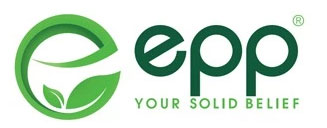Do you know what standards must be followed while producing export packaging? Currently, Vietnam's packaging sector not only serves the domestic market well but also meets export needs.
The packaging sector in Vietnam has followed products to high-end markets such as the United States, Japan, and Europe. So, what standards must export packaging follow when it is manufactured? The next post will provide you with the answer to assist you to form the most objective opinion.
What makes export packaging unique?
Export packaging is not only crucial for enclosing and conserving products, but it also has a significant impact on promoting products and inspiring customer choices.
.png)
However, because imported and exported goods must travel a long distance to reach customers they are subject to severe inspection by authorities. As a result, export packaging must provide particular features during shipment.
To begin with, most exported items are transported for an extended period of time before reaching consumers. As a result, the packing must be appropriate for each mode of transportation, such as airplanes, ships, trucks, and containers.
Second, packages must be packed compactly to provide durability, toughness, and resistance to push, push, and impact in warehouses, on pallets, or in containers. When storing, handling, and transporting by land, air, or sea, it is necessary to touch.
Third, exporters must grasp the legal requirements and customer needs (if any) about product packaging and compliance in the most acceptable manner.
Export packaging legal requirements
General rules on target market packaging, including general market and country-specific laws. Material regulations for export packaging production: what materials are used to make the packaging? Plastic, paper, metal, or wood?
Are there separate regulations for each type of packaging material? Is the material acceptable in the target market? Are there any restricted materials?
Regulations governing product marking and labelings, such as the language used, product name, the weight of goods, components/nutrition, and provenance. The target market's environmental regulations.
Today's most popular export jumbo bags
FIBC bags have been used to service the export needs of several industries, including agriculture, chemical, construction, food, pharmaceutical, and aquaculture. Jumbo bags come in both coated and uncoated varieties, with an inner PE liner. Depending on the needs of the customer, the bag fabrics can be with or without lamination and with or without PE lining.
.jpg)
Jumbo standard bag
With load capacities ranging from 500kg to 2000kg, this is the most popular and readily accessible giant bag. These sizes, however, fluctuate depending on the customer's needs and preferences. The sectors that utilize this line of bags for the usual transport of dry materials, particularly those in powder form, are non-combustible.
Conductive FIBC bag
This non-conductive PP fabric jumbo bag is also referred to as a Type C-FIBC bag. The jumbo bags are made of non-conductive threads that are interlaced. They are appropriate for transporting combustible powders.
Packaging lining
These FIBC bags include a multi-layer polyethylene lining for storing and transporting highly hygroscopic chemicals. The bag linings are sewed or glued to provide better protection, avoid contamination, and keep the product safe.
Anti-static jumbo bag
PP jumbo bag manufacturer produces this bag from antistatic fabric accompanied by electrostatic dispersing fibers. These packages are best suited for transporting flammable powders or other substances when flammable substances are nearby. However, antistatic bags are not suitable when substances such as water, grease, and any such conductor come into contact with the bag.
Baffle or Q-Bags
Baffle or Q-Bags are Jumbo bags with polypropylene baffles sewn at the four corners of the bag. This anti-bulge baffle bag increases the filling capacity by 30% compared to a standard jumbo bag. Better stackability, shape retention, spill protection, and space optimization.
Recently, information about the standards for producing export packaging was shared. EPP is producing and selling PP woven bags A, B, and C. For any information or to purchase products, please visit https://epp.vn/ or contact us directly. address at the end of the article.
Address: Central Lake 1 Building, Aqua Bay, Ecopark, Van Giang, Hung Yen, Vietnam.
Website: https://epp.vn/ https://eppvietnam.trustpass.alibaba.com
📲Ms. Jennifer: +84 986 002 888 - sales@epp.vn
📲Ms. Vera: +84 962 055 998 - sales02@epp.vn
📲Ms. Ivy: +84 973 650 865 - sales03@epp.vn
📲 Mr. Lee: +84 976 791 865 - sales03@epp.vn



